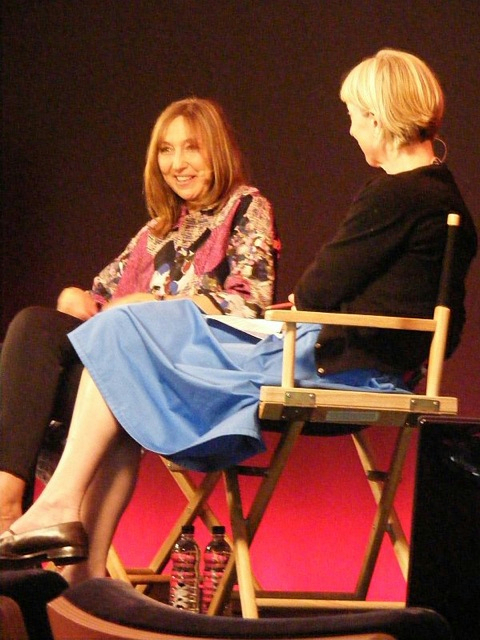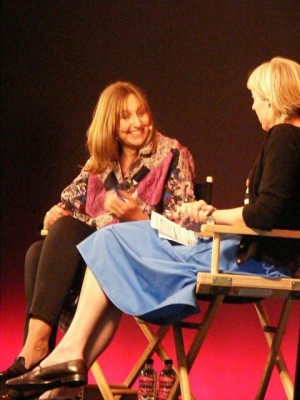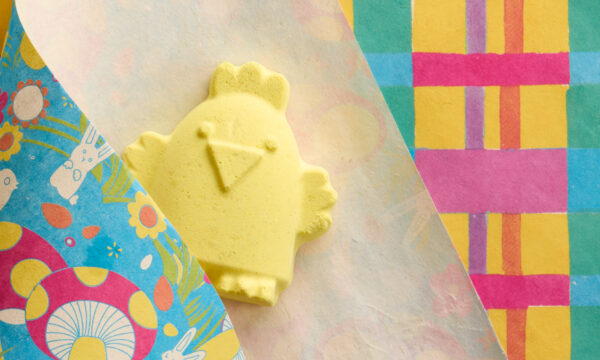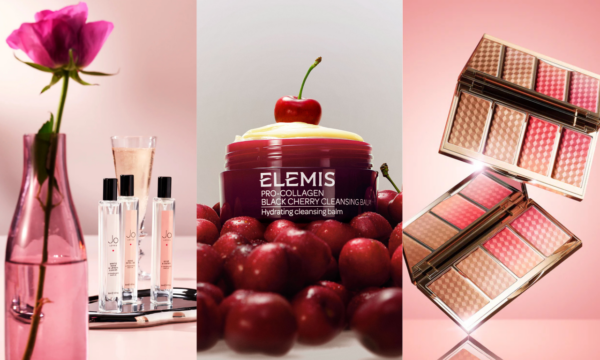Cath Kidston is “coming up roses” as the brand reaches its 20th anniversary

The world famous designer Cath Kidston opened her first shop 20 years ago, and to celebrate this she has released a book charting her life and the growth of her business. She was recently at the Regent Street flagship Apple store to tell us more about it, and The Upcoming were there to find out more.
As a child growing up in “a privileged little bubble” in the Hampshire countryside, Kidston enjoyed playing shop and making “houses” in the garden with her sister. She was always encouraged to be creative by her parents and was given books to read, and paper for drawing and painting. Cath was never very academic but did well with subjects she could visualise such as history, English, geography and of course art.
“I have an incredibly visual memory and can vividly recall all the colours and prints from my childhood home. I can still picture my bedroom with its pale blue walls and striped rosebud curtains, the overblown chintz in our playroom and the coloured formica worktops and gloss paint.”
Moving to London at the age of 17, Kidston didn’t head to art college as many designers do. Instead she went into shop work. As someone who had always loved shops and loathed school this was heaven for her, playing with the tills and rearranging the displays and windows. After a huge list of jobs and ideas she finally decided that she would like to be an interior designer. She worked for Nicky Haslam and this is when work really began to become interesting, and Kidston felt she had a future and gained the confidence to open a business with a friend.
It was during the time that Cath Kidston had her “eureka moment” when looking through a magazine and seeing a photograph of a bathroom. She had been in business with her friend for a few years, but wanted to move on and do something new on her own. After collecting vintage items for years Kidston came to the idea of a “posh junkshop”. The photograph was elegant and vintage, but would have worked well with more modern items too.
The concept behind the first Cath Kidston shop opened in 1993 was to have very simple and useful pieces that could be mixed in with the modern Swedish styles, or the older, more traditional styles. The fusion of traditional and modern is a motif still very strong with the Cath Kidston brand today.
Thanks to a mistake in a fabric order, Kidston began to make her own items. She had ordered some rose gingham fabric from the then Czechoslovakia, with the intention to sell it on for use in the interior design trade. However, when the fabric arrived it had been made into children’s duvet covers and pillowcases. Kidston couldn’t afford the loss and so set about making the covers into ironing board covers, aprons, peg bags etc. The press picked up these items and it kick-started the business.
“You have to be enterprising and innovate, as bad things happen. At the time I didn’t know what to do and thought this is a disaster, this is going to be the end.”
After suffering from breast cancer Kidston began to reassess what was important to her, and just what she wanted to do with the company. At the time the business was made up of two parts, the shop and the interior design business, but Kidston decided to drop the interior section to focus on the products. With full attention on products the business began to take off even more.
20 years on the name, Cath Kidston is a global brand with 100 shops across the world, all worth around £89 million. The brand is now so popular in the UK that is estimated one in four women own something designed by Cath Kidston.
“For me anything [I design] needs to be practical, interesting things that I can use in an everyday way…. I had a grey covered ironing board on the back of my door and I thought why can’t an ironing board look nice?…. I like taking an old print that might remind me of something like a sofa at home, or home furnishings and putting that onto a bag. I like mixing the use of things.”
Though there is a long list of products that she has refused to make, Kidston likes her products to be useful and relevant and so refuses to make anything that doesn’t fit this idea. That said though, there is a huge range of Cath Kidston products available from phone covers to bikinis to tents.
The practicality of her products is something very important to Cath Kidston and in the past she has refused to make certain products, as they didn’t fit in with her stance on practicality and relevancy. Relevancy alters too and the product ranges are often changing to stay in touch with the changing needs of people.
Ultimately Cath Kidston hopes the brand will become independent of her, but still on good terms. She compares the brand to a child and that child is now 20 years old and independent but in need of advice and help at times. Still passionately involved with the range and the ideas, Kidston has given over control of other sections to other people, as she feels they can look after them better and make decisions she might struggle with. It’s good to see a founder not trying to stay in control of every aspect of a business, and this has undoubtedly helped the brand to grow to the size it is today.
The brand is set for big, big things and more expansions and ever more product ranges, but will grow in an “organic” way that stays true to its roots and ideology. Spreading further across the world and allowing the current ranges to grow, Cath Kidston is a name that will certainly be around for many more years to come.
Indra Wignall
Photos: Indra Wignall
Cath Kidston’s book Coming Up Roses is available now from bookstores and as an ibook via the iTunes store.


























Facebook
Twitter
Instagram
YouTube
RSS